

Corrosion resistant alloy cast iron
Casting parts resistant to seawater corrosion and marine atmospheric corrosion. The representative material is STNi2CrCuRe. They are mainly used in coastal water conservancy projects, Haihe sluices, coastal power generation projects, sewage treatment projects and other castings that need to be resistant to seawater and marine atmospheric corrosion and urban sewage treatment. , Used to replace expensive stainless steel. Compared with stainless steel structural parts or stainless steel composite structural parts, seawater corrosion-resistant castings have the advantages of flexible structural design and low cost. In recent years, they have been successfully applied in coastal projects.
Introduction to the performance of STNi2CrCuRe seawater corrosion resistant castings
For seawater hydraulic engineering, the consumption of corrosion-resistant metal materials is large, and the consumption of one project may reach tens of thousands of tons. The use of advanced alloys is unrealistic and a waste of resources. The use of ordinary carbon steel and cast iron is difficult to meet the requirements of actual use and design; the use of stainless steel welded steel structure matrix composite materials, due to the different electronic potential differences of different materials, often due to the accelerated corrosion of the welded parts, the composite material embedded parts are premature After failure, after comprehensively considering various material selection principles and balancing various factors, low-alloy seawater corrosion-resistant cast iron is the best choice. The low-alloy cast iron currently developed and in use is a low-alloy corrosion-resistant cast iron formed by adding elements such as Ni, Cr, Si, Cu, RE to the cast iron. The addition of Ni, Cr, Si and other elements reduces the anode phase in the cast iron, which is the matrix. The activity moves toward the positive potential, thereby reducing the corrosion rate of the material; adding Cr, Si, etc. to form a protective film on the surface of the cast iron, which is equivalent to increasing the corrosion resistance of the microbattery, reducing the current and reducing the corrosion; adding rare earth elements to make cast iron Degassing, removing impurities, improving the structure, especially the impurities on the grain boundary, thereby improving the corrosion resistance of cast iron, especially the intergranular corrosion resistance. In recent years, corrosion-resistant cast iron represented by STNi2CrCuRE has gradually formed, the corrosion rate is about 0.05-0.2mm/a, and the corrosion resistance level is 4-6. It is currently the most widely used corrosion-resistant cast iron material. In recent years, a large number of applications have been obtained in seawater hydraulic engineering, with good results. STNi2Cr alloy cast iron material has been praised by users for its excellent cost performance. In recent years, it has been more and more used in offshore engineering and coastal water conservancy projects. In more than forty project applications, no corrosion that exceeded the design requirements was found after tracking.
The STNi2Cr alloy cast iron material has the following problems:
1. When alloy cast iron materials without surface corrosion are exposed to the air for a long time, a layer of floating rust will be formed, but it will not affect the seawater corrosion resistance of the alloy cast iron materials.
2. The material is a brittle material of the gray cast iron matrix. Improper operation will cause the embedded parts to break during the lifting and transportation process.
表1 常用耐海水腐蚀铸件的化学成分
|
牌号 |
C |
Si |
Mn |
P≤ |
S≤ |
Ni |
Cr |
Cu |
RE |
耐腐蚀性能 |
|
STNi2CrCuRE |
2.8~3.6 |
1.8~2.8 |
0.6~1.0 |
0.12 |
0.06 |
2.0~2.8 |
0.8~1.5 |
0.50~1.00 |
≤0.15 |
高
低 |
|
STNi2Cr |
2.8~3.6 |
1.8~2.8 |
0.6~1.0 |
0.12 |
0.06 |
2.0~2.8 |
0.8~1.5 |
|
|
|
|
STNi2Cr |
2.8~3.6 |
1.8~2.8 |
0.6~1.0 |
0.12 |
0.06 |
1.5~2.0 |
0.8~1.5 |
|
|
|
|
STNi2Cr |
2.8~3.6 |
1.8~2.8 |
0.6~1.0 |
0.12 |
0.06 |
0.8~1.2 |
0.8~1.5 |
|
|
For the above-mentioned commonly used seawater corrosion-resistant cast iron materials, the design unit can select material compositions with different alloy content according to the application environment's seawater salt content, seawater velocity, pollution degree of seawater (or sewage), and the importance of the project. Table 1 grades from top to bottom as the alloy content decreases, the corrosion resistance and cost are gradually reduced.
When designing the material of alloy cast iron, the design unit should avoid using AS (arsenic) and Sb (antimony) alloy elements. Although AS, Sb and other elements reduce the activity of the cathode phase in cast iron, move the cathode phase toward the negative potential, reduce the potential difference between the different phases of the corrosion-resistant cast iron, and reduce the corrosion rate of the material, but the casting has a great tendency to crack Reduce the mechanical properties of alloy cast iron. Increasing the Cr content not only improves the corrosion resistance of the alloy cast iron, but also greatly increases the hardness of the alloy cast iron. However, if the Cr content is greater than 1.2% and the hardness is greater than 350HB, it will be difficult to process. If the working surface of the embedded part needs high hardness, in order to reduce the manufacturing cost, the alloy composition content of different embedded parts should be distinguished according to the use function of the embedded parts, such as: door lintel (top sill), bottom sill can choose Cr: 0.8-1.2%, hardness HB≧220; Cr: 1.2-1.8% can be selected for main rail, anti-rail, main anti-rail, hardness HB≧300
In order to meet the design life of alloy cast iron, when selecting materials for seawater engineering embedded parts, the first thing to do is to select the applicable metallurgical product varieties and grades. The products of this grade should have corrosion resistance, comprehensive mechanical properties and suitable heat treatment conditions that meet the design requirements; After determining the type and brand to be used, the metallurgical quality of the castings must be strictly required, including the accuracy and uniformity of the chemical composition; secondly, the metallurgical process for the production of seawater engineering embedded parts must be considered, because the advanced smelting process produces high-quality products To guarantee, it is difficult to ensure the accuracy and uniformity of the composition in the cupola. Only the low-frequency induction furnace and other smelting furnaces can smelt high-quality molten iron to ensure that the design requirements are met; moreover, it depends on the casting process of the product. Only advanced casting technology can cast high-quality castings that not only have high appearance quality, but also have good internal quality. These aspects should be paid special attention to when selecting materials.表2 典型海水工程埋件用腐蚀铸铁的性能
|
牌号 |
抗拉强度(Mpa) |
抗弯强度(Mpa) |
硬度(HB) |
腐蚀率(mm/y) |
|
STNi2CrCuRE |
≥240 |
480 |
≥240 |
0.05~0.20 |
注:对于主轨、反轨、主反轨等需要与轮子接触的埋件,Cr含量可调整到1.2%以上,如用户无特殊要求,为方便机械加工,Cr 含量不作调整。
GSTNi2CrCuRe简介
为解决STNi2CrCuRe韧性不足的问题,我公司经过长期攻关,研制出了高强度兼具一定韧性的新型合金铸铁材料GSTNi2CrCuRe ,并经国际知识产权局备案形成我公司的专有技术,其化学成分与主要性能如下表:
表3 GSTNi2CrCuRe耐海水腐蚀铸件的化学成分
|
牌号 |
C |
Si |
Mn |
P≤ |
S≤ |
Ni |
Cr |
Cu |
RE |
|
GSTNi2CrCuRE |
2.8~3.6 |
2.0~3.5 |
0.5~1.0 |
0.12 |
0.06 |
2.0~2.8 |
0.6~1.5 |
0.50~1.00 |
≤0.15 |
表4 GSTNi2CrCuRe腐蚀铸铁的性能
|
牌号 |
抗拉强度(Mpa) |
延伸率(δ5) |
硬度(HB) |
腐蚀率(mm/y) |
|
GSTNi2CrCuRE |
≥420 |
≥ 3% |
≥270 |
|
Compared with STNi2CrCuRe, the significant advantages of GSTNi2CrCuRe material are: when the strength is nearly doubled, the matrix also has a certain degree of toughness (its toughness index is equivalent to the bucket teeth of an excavator), and the seawater corrosion resistance is greatly improved.
Typical structure of seawater corrosion resistant alloy cast iron embedded parts
底坎典型结构
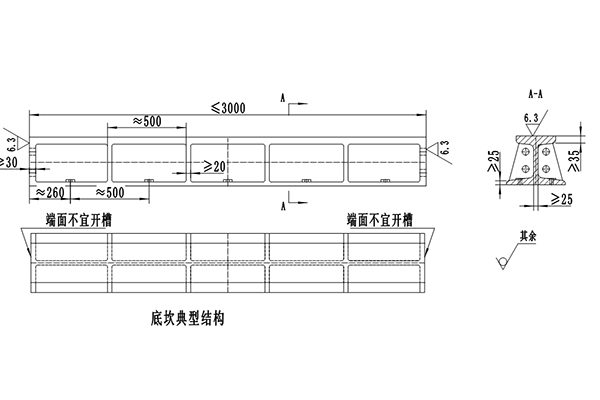
门楣典型结构
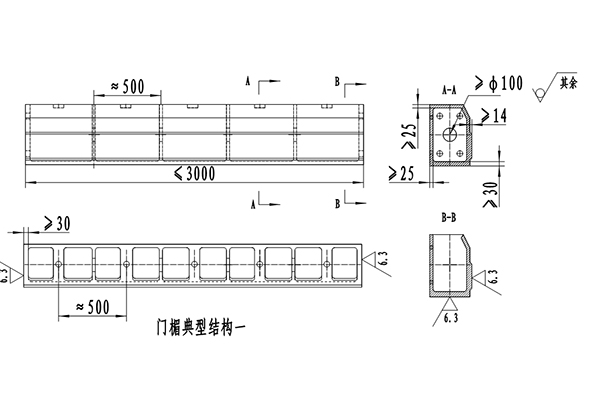
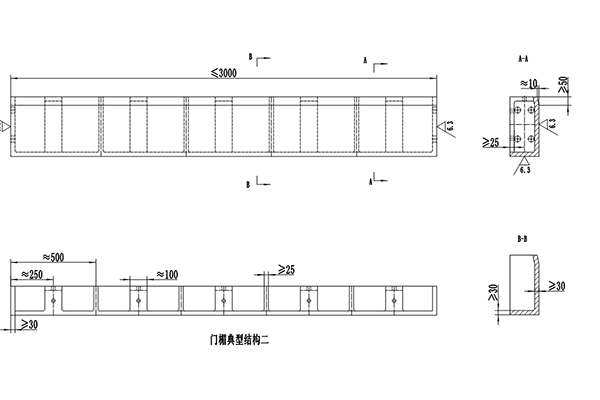
主轨典型结构

主反轨典型结构

门槽埋件的结构工艺性
目前水利工程门槽埋件有结构件与铸造件两种。因为制造工艺的差别,这两种工件的结构形式有比较大的区别。结构形式的 合理性,决定了制造工艺性的好坏,从而影响到埋件制造的难度和精度,进而影响到投资方的成本。
合理的铸件壁厚与连接
合理的铸件壁厚与过渡可获得较理想的铸件物理性能,不出现白口倾向,同时得到合理的石墨形状
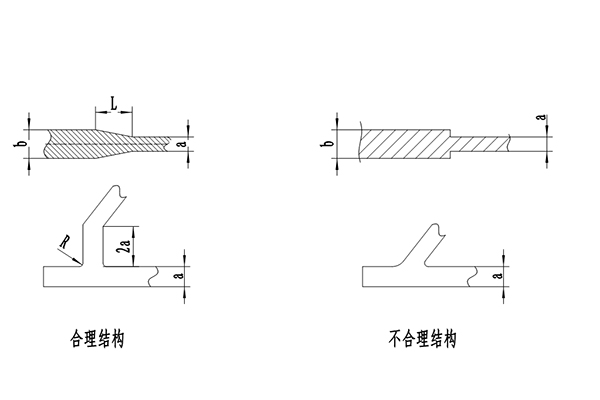

铸造门槽埋件的结构工艺性
铸件的筋板设计:筋板距离不宜超过500mm,对于主反轨类铸件,要考虑在筋板上设置灌浆孔。
埋件的断面形状:合理的断面形状应是1)平面宽度不宜超过500mm;2)埋件自身结构大体对称;3)壁厚不宜悬殊过大
不合理的断面形状会造成浇注塌箱、铸造后收缩变形,铸件热结处产生缩孔、缩松缺陷。
埋件长度:埋件长度2.5-3m比较合理,埋件过短增加安装难度并降低安装精度,埋件过长会造成变形量增加并加工困难。

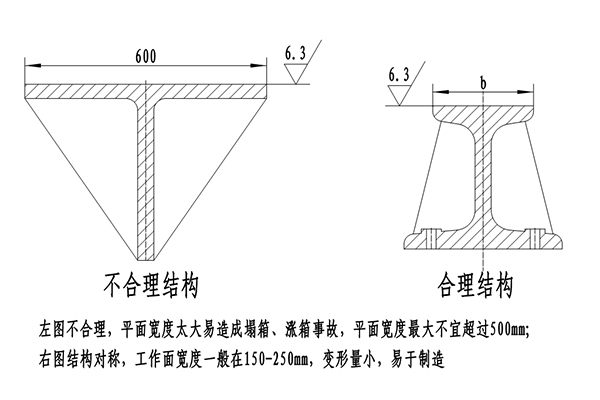
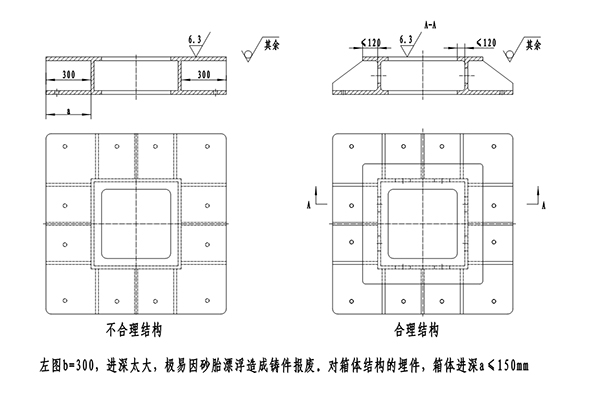
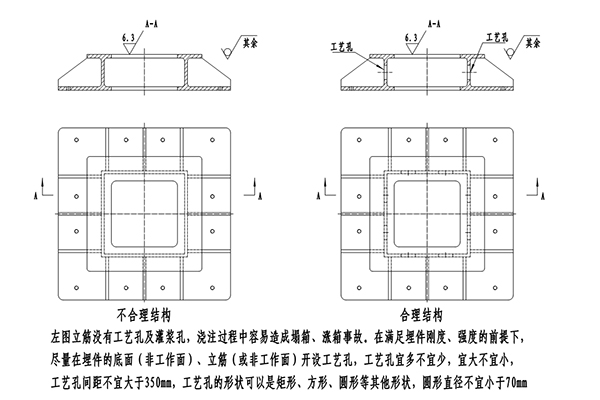
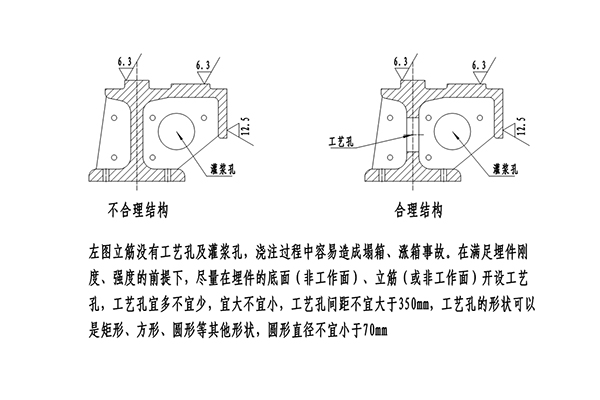
合金铸铁加工面涂层的合理厚度
耐腐蚀合金铸铁是依靠材料本身的性能进行防腐的,设计单位在进行防腐设计时,建议加工面漆膜厚度不宜超过100um。因为 埋件工作面经机械加工后很光洁,与抛丸或喷砂后的钢结构相比,漆膜附着力很差,如果漆膜设计过厚(如超过150um),漆膜涂 层在干燥后会变得很脆,受到外力磕碰时很容易脱落而失去防腐意义,所以建议耐腐蚀合金铸铁加工面的漆膜厚度最好不要超过 100um
耐腐蚀合金铸铁埋件实物图片
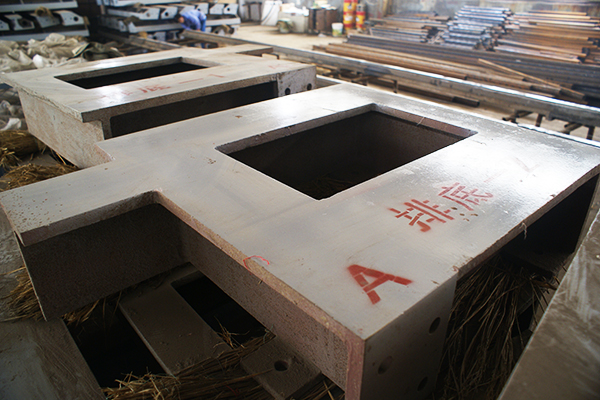
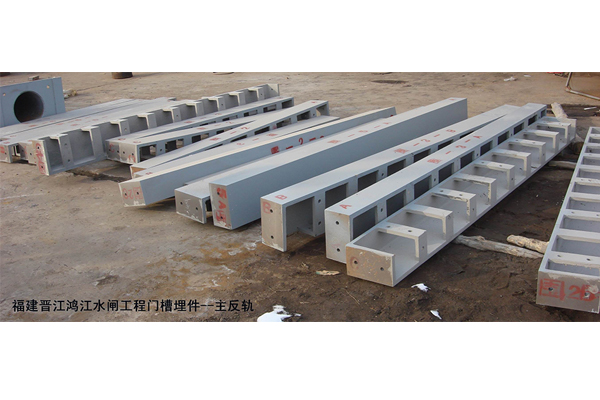
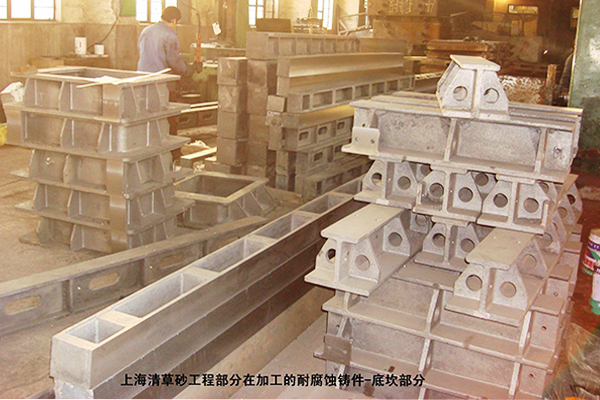
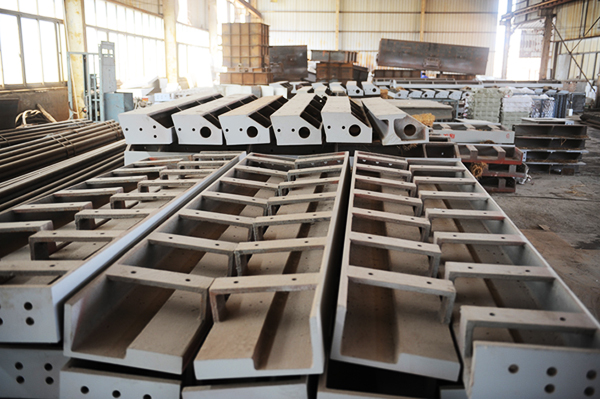
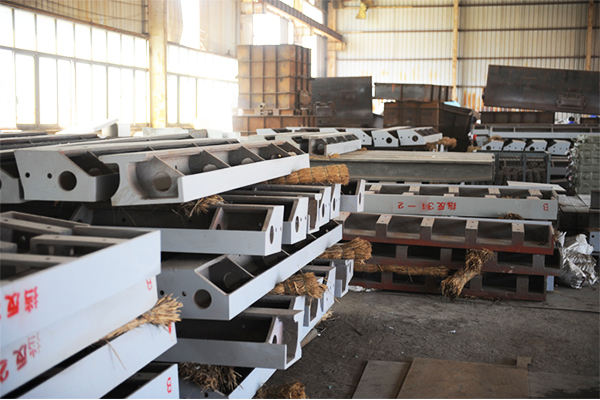
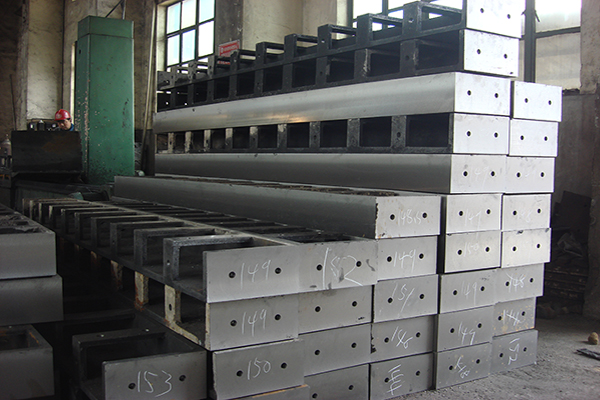
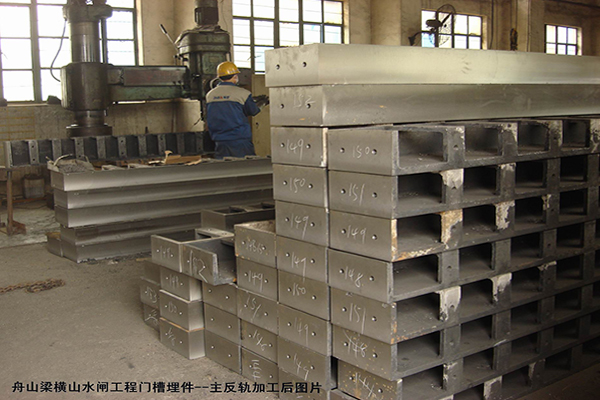
各种结构形状的主反轨图片
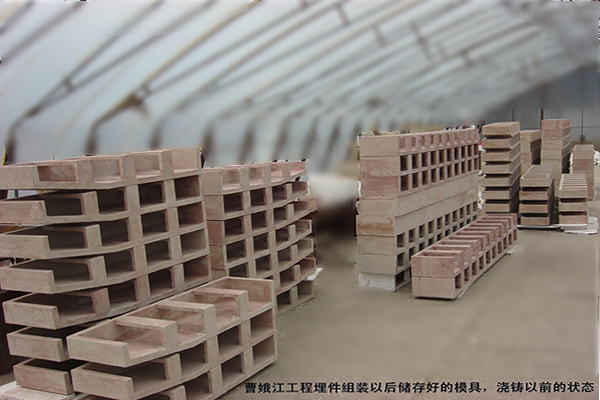

TIANMING HEAVY INDUSTRY

WeChat scan
Mr. Guo : 18615581133
Mr. Zhang:18396850703
TEL:0531-75703382
Mail:sdtmz@sina.com
Postcode:271100
Address: Heavy Industry Industrial City, Laiwu High-tech Zone, Jinan City, Shandong Province
PRODUCE
CopyRight © 2020 Shandong Tianming Heavy Industry Technology Co., Ltd. All Rights Reserved. 鲁ICP备12021762号-1 Powered by www.300.cn